The Lake District national park is located in the north-west corner of England and is an area characterised by rugged peaks, innumerable lakes, upland sheep farms and picture-postcard-pretty towns and villages. With a high proportion of the region comprising vertiginous, rocky topography, it might not be a landscape you would automatically think of as ideal for gravel riding. So this is where Andrew Barlow’s newly launched gravel guidebook comes in. We chatted to Andrew to get some insight into why he chose this part of the UK as the subject of his first guidebook.
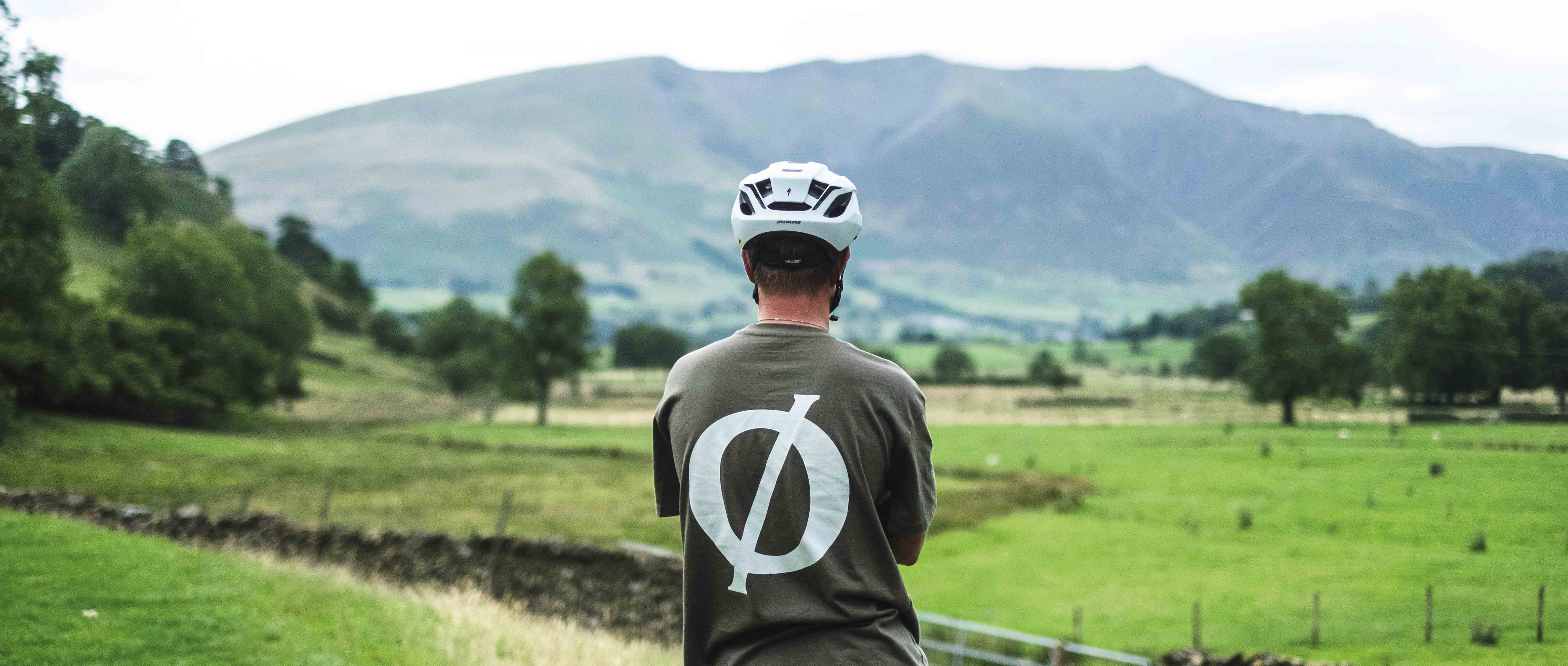
When most people think of the Lake District, we suspect they picture big mountains and their assumption might be that it’s mountain bike terrain, hill-walking terrain or rock-climbing terrain. Isn’t the Lake District a little gnarly to have loads of good gravel riding? That was the first question we put to Andrew at the start of our chat – was it tough finding enough lower-grade gravel routes in the Lake District to include in the book?
“In short. Yes, absolutely.” Andrew replied. He continued “This is the thing with gravel being originally from Midwest America where everything is essentially pan-flat. We've had to just be more imaginative in the UK. We're not in America. We're not in the Alps. We're not in the Atlas Mountains. We do not have the square kilometres of gravel trails such as you might find elsewhere in the world. So, we have to think outside the box, you know. There's a phenomenal route in my book around Grizedale which is “proper gravel” but elsewhere we had to be a bit more imaginative.”
Does that mean that some of the routes in your book are a little tougher than what might typically be considered as “gravel” riding? “Yes, in some instances” Andrew replied. “I think it helps riders build up their skill set and if it's beyond their remit, then I hold my hands up and I apologise. But it's why the book is graded as it is. Having said that, I also tried to make my book as accessible as possible because I don't want people being put off, so there’s a mix of route grades included in it.”
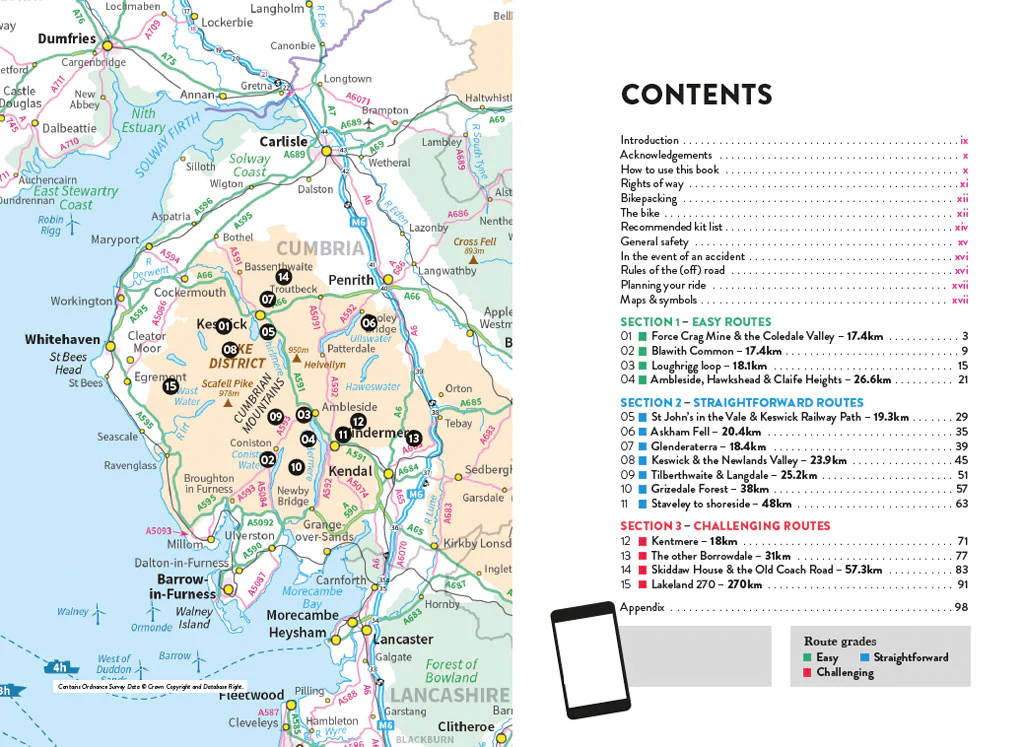
Andrew’s book contains a total of 15 routes which encompass almost the whole of the Lake District National Park. We asked him whether he had deliberately set out to include both well-known and less visited parts of the region?
“I definitely did and I tried to be as imaginative as possible” he told us. ”There’s actually been quite a bit of a heated debate about this. I wanted to try to showcase some of the less known areas purposely so that people can enjoy them, just like I do, by being a local. But there’s been a bit of push back on it - why did you put this bit in this in? Why did you put that bit in? Luckily though 99.9% of the feedback has been positive. After all, the outside is there for everybody to enjoy.”
Andrew continued “There is a vast difference between the riding across the region. Here in Kendal [where Andrew is based] the riding is more obviously associated with Dales-esque riding - it's super rolling. It's stunning, but you know it's not as mountainous. I do feel that a lot of Cumbria is overlooked for the honeypot towns such as Windermere and Keswick. They are beautiful destinations, but the county has so much more to give. If you go and ride in the southwesterly fells, it has such a different feel to here, yet we're only 25 miles away, you know. That will probably be my next trajectory – to do a book about the less known bits of Cumbria, because there's so many corners that are not currently explored by visitors.”
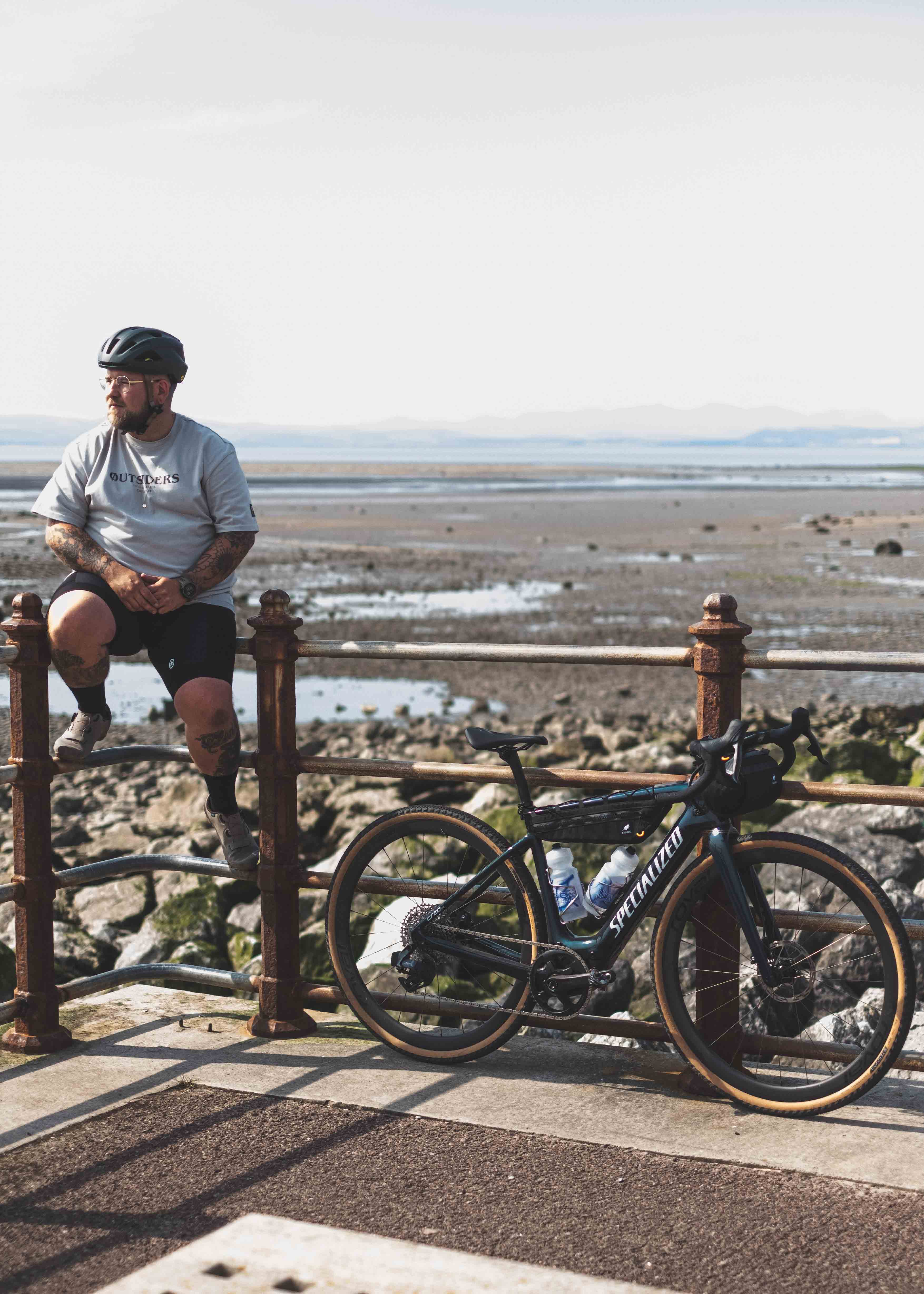
We asked Andrew how he ended up in the Lake District and what inspired him to become a guide book author?
“I grew up in Cheshire, in a working class farming family. The outdoors was in me from a very young age, so exploring for me was part of growing up. My friends and I got into mountain biking, or more accurately riding bikes to start with, just exploring by bike, which was super fun. Then I got into mountain biking in my early teens. The riding I did was fairly diverse for my age. We might mountain bike one week and then we'd get the BMX bikes out and there might be visits to the skate parks in Manchester.
I went to college, where I studied agricultural engineering and worked in that world for a number of years before moving into driving commercially. Then I was heavily involved in the music industry for a number of years and I was playing in bands and touring in bands, which was super fun.
Then around the back end of 2015/16, that really kind of slowed down. So I started looking for a “normal” job. A very good friend of mine owned a screen printing company and he was a very busy at the time. I ended up working for him over Christmas, just helping him fulfil orders and things like that and then that actually turned into a full-time job. He trained me to be a screen printer, which was pretty fun. The business then got bought out by a massive corporate company and then I was consumed by print for the next two years of my life.
For a while, I split my time between Manchester and the Lake District and I had a couple of friends up here and they’d come hiking and camping with me and I'd be thinking, I could live here full-time. One day a guy turned to me and said, well, why don't you just do that? I came up for an interview, for a little outdoor shop in Ambleside which is very popular with the outdoor world. I came up for my interview and they offered me a job there and then. So I went to view a room in a house and I moved up here ten days later. That was in 2018 and I’m still here nearly six years later.”
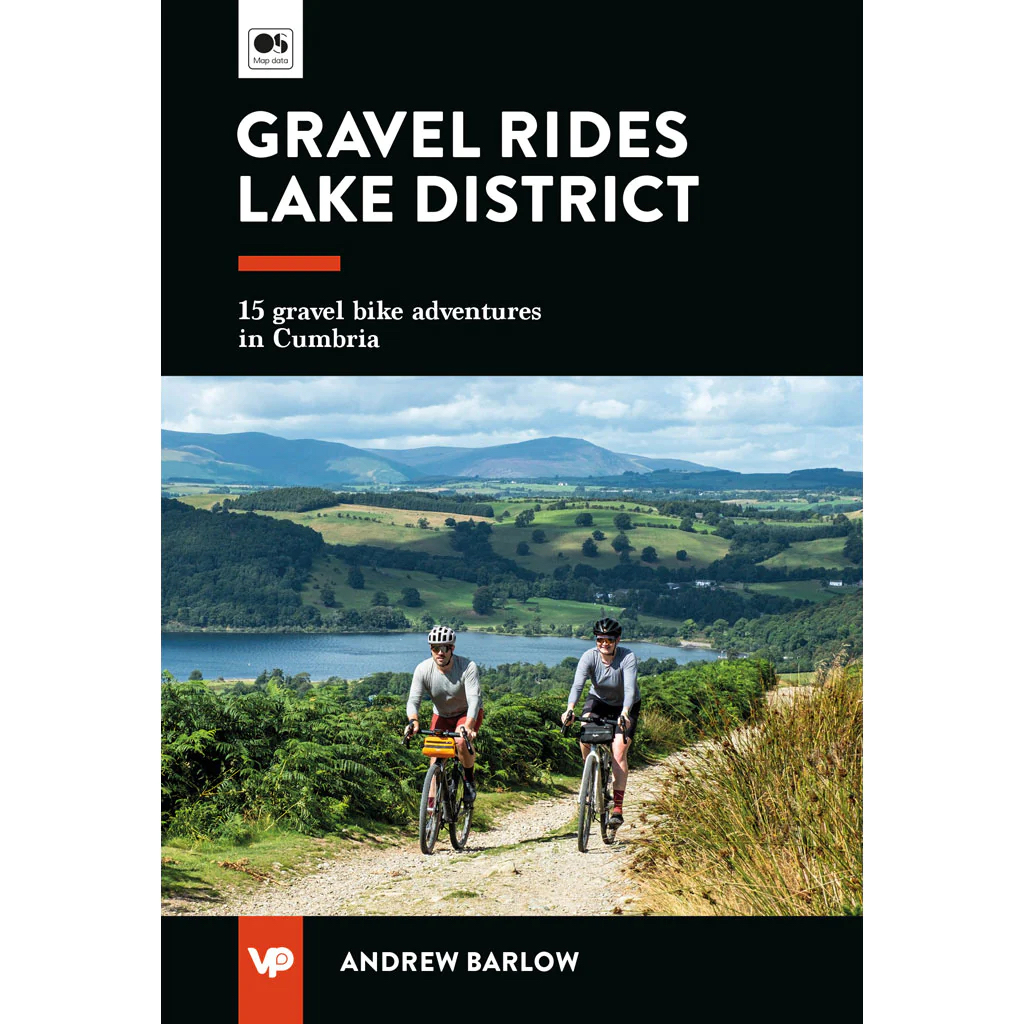
Having figured out how and why Andrew ended up living and riding in the Lake District, we asked him next about his journey to becoming a published guide book author?
Andrew explained “I had a friend when I was in my mid-teens who was really into photography. He was actually a skateboarder and I used to take his camera and shoot pictures of the guy skateboarding or BMX riding or whatever. I realized that I really enjoyed doing it, so I bought myself a film camera. At the time good digital cameras still costs thousands upon thousands of pounds, so I started with a film camera. My love of photography comes from my grandma because she always had a camera when we were kids and she took it everywhere with her. Photography led me into the world of urban exploration which is partly about the art - the documentation of abandoned buildings.
That's what got me into photography initially, but I didn't like the anxiety of it all. Then I was introduced to a good friend of mine, Joel, who's unfortunately no longer with us. He was from North Wales and we met through urban exploration and but he said if you don't fancy doing that, let's go hillwalking instead. He took me on some pretty gnarly routes like Bristly Ridge and the north face of Tryfan, which was super, super fun. I realized that I really enjoyed it, so I bought my first digital camera and the trajectory from there was that I used to document my walks. Instagram at the time was really booming, so we really had a platform to share our work on. And then it kind of transpired that I seemed to be doing okay at this. So, when I moved up here, that's when like my commercial photography really took off - mainly with outdoor brands.
During the covid pandemic I got a job at Wheelbase [a big Lake District based bikeshop] and I started writing blog posts and helping with photoshoots for them. I wasn't very academic at high school - I wasn't very good at English. But I've always been quite an expressive person and really enjoyed writing. That led me on to start blog writing and writing about my experiences out in the hills. The term gets thrown around a lot nowadays, but visual storytelling is such a fantastic way to tell a story. And if you can write a piece alongside the images I feel like the end user can really relate. One day when I was working in Wheelbase I bumped into Kirsty who works for Vertebrate, the publisher of my guide book, and we got chatting about photography and writing and it all led from there."
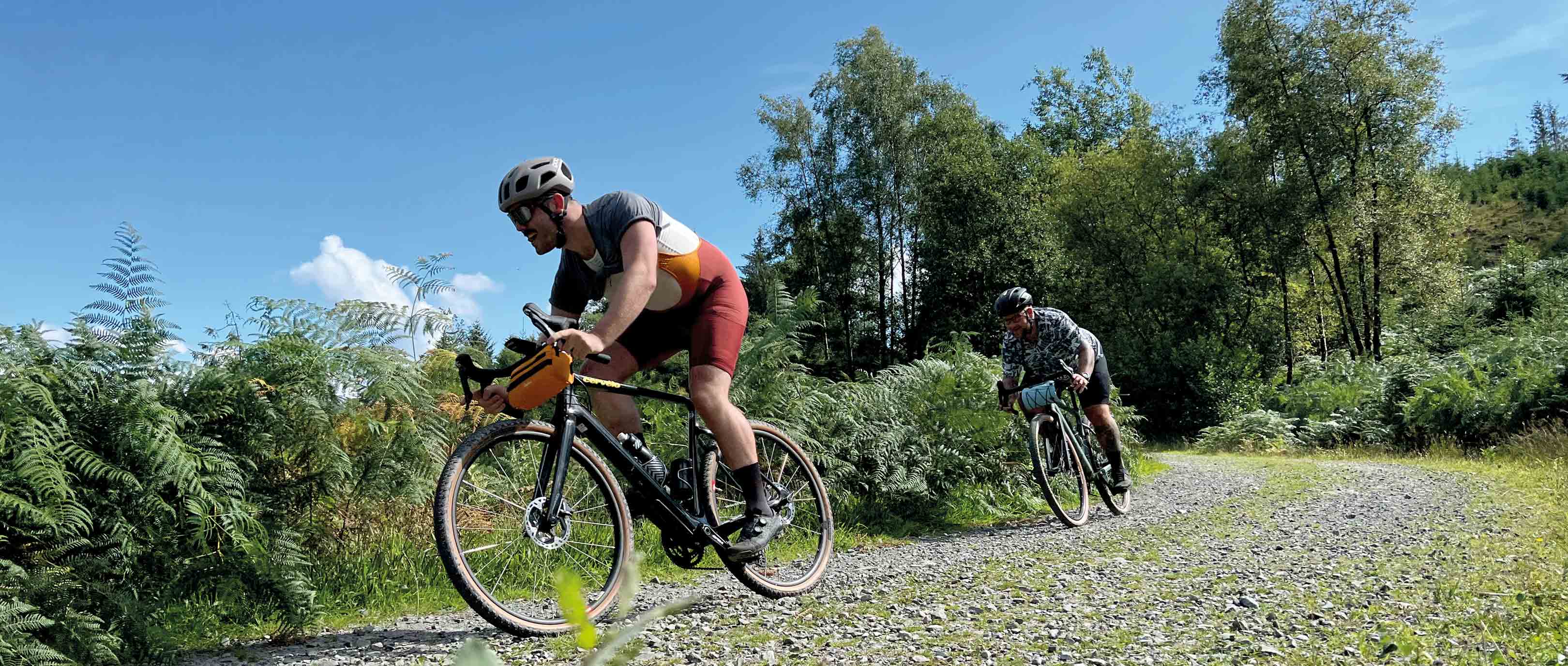
"I've been riding my bike around here a lot I'm one of these people that kind of will sit for hours looking at maps. I think it's curiosity more than anything – I’m always thinking, where does that track go? Or I wonder if there's a track up there or is there a footpath? So I started creating my own routes and I got better at map reading. I only had a pretty utilitarian bike at the time, but I started exploring and at the time gravel riding was really starting to boom. So I bought a gravel bike and then I decided that I might make a shot at making a guidebook!
I tossed a few ideas back and forth with Kirsty and asked whether they were in the market for a gravel ride book about the Lake district book. Vertebrate have these fortnightly meetings where they discuss future ideas and two weeks later she said they were interested in seeing some sample text and a route idea and everything just spiraled from there.”

We put it to Andrew that this sounded a lot like destiny – all of his skills, experience and knowledge coming together at the right place and the right time?
“The world works in mysterious ways. It's all actually really fallen into place and that hasn't been essentially by accident. The fulfilment and the joy of putting the entire book together has been amazing and I’ve really loved the process.”
We finished off by asking Andrew if he had any advice or top tips for anyone coming to ride in the Lakes for the first time?
“Make sure you’re properly prepared” was his quick answer. He continued “Make sure you take enough food with you. Make sure you've got a backup plan for any occasion because the weather does turn very quickly. I also would say pack a lot of spares. Some of the riding is very unforgiving. And fit the biggest tyres you can. Some of the routes are definitely what I would call “gravel-plus”, so having a bike designed for slightly tougher terrain would be big help.”
Andrew ended our conversation by saying “I want to help make the cycle industry more accessible. I'd advocate that everybody belongs on bikes. And everybody deserves to enjoy it as much as I have.”
With an ethos like that, it was obvious that Andrew was destined to become a guide book writer.

His book, 15 gravel bike adventures in Cumbria, is published on March 22nd and is available from Vertebrate Publishing and all good bookshops.